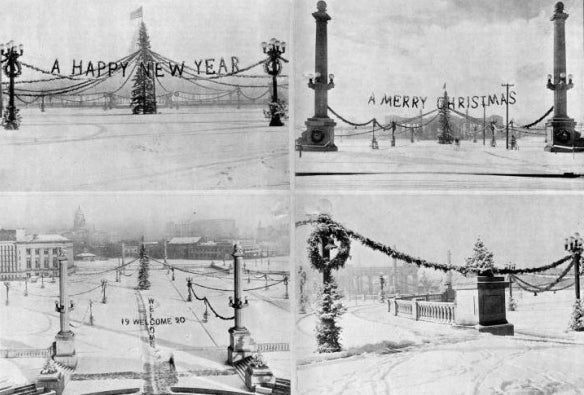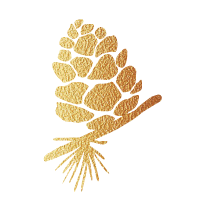Your Cart is Empty
Shipping is always free to the continental US.
Shipping is always free to the continental US.

Staying Lit Through January – Why Denver’s Christmas Lights Stay On (And On)
January 05, 2020 4 min read
Staying Lit Through January – Why Denver's Christmas Lights Stay On (And On)
Sad to see the Christmas lights come down as the holidays pass? Then come to Colorado! Denver doesn’t stop dazzling just because it’s January. If you’re a native to the area, or pick up quick on local customs, you’ll know that out here, we leave the lights on for you.
Every year, as the rest of the world puts it glimmer back in the box, Denver keeps it going for about another month. That's because the lights come down when the annual National Western Stock Show rides out of town. That’s what we've been doing here in Colorado, every year, since the mid 20th century. Even though the event's organizers decided to postpone the 115th Stock Show in January 2021 to January 2022 due to Covid, the Stock Show's numbers continue forward, so the 2025 show is the 119th. The dates of the 2025 National Western Stock Show are January 11-26 Although the very first Stock Show took place in late January of 1906, the tradition of staying lit rolled in later.
We weren’t around to see what the 16th Street Mall was like in 1907, but we’re guessing there wasn’t a piano sitting on it. And the little food and shopping kiosks were more like mule carts. But there were lights! At the holidays, the 16th Street merchants spruced up by substituting their everyday tungsten bulbs with red and green ones (bulbs dipped in paint? Probably.) This is where local lore began, and eventually had a tradition tied to it.
Fast forward seven years: Denver electrician David Dwight “D.D.” Sturgeon, who was also founder of Sturgeon Electric – established in 1912 and today an industrial construction company laying power lines nationally, wanted to share the holiday cheer with his sick ten-year-old, David Jonathan Sturgeon. Young David was too ill to come down from the second floor of their home in Denver’s Berkeley neighborhood to enjoy their family’s indoor Christmas tree. With an electrician for a father, there were ways to bring the festive lights up to him. D.D. Sturgeon dipped bulbs in red and green paint, (this is confirmed), strung them on electric lines, and then draped the lines on the pine tree in their yard. Now his son could enjoy the lights through his second-story window. And if you go by the original house just west of Tennyson Street today, (4408 West 34th Avenue, to be precise), you will see several very tall pine trees standing in the front yard. One of these stately beauties donned the very first outdoor holiday lights in the US, over a century ago, making it the ultimate tree mother of outdoor lights!
As you would correctly guess: that tree became an attraction. In clanging carriages and idling autos, people came from near and far to see the sparkling site. And of course, it caught on. D.D. Sturgeon became known as “Mr. Yuletide”, and the Tennyson Street neighborhood residents began lighting up their own yards, thus initiating a holiday tradition. In 1918, Denver held the first outdoor lighting contest, with hundreds of homes in competition. The craze also inspired manufacturers to create affordable, all-weather lights, which ultimately drove the national rise of lit billboards, and eventually neon signs.
The city’s next festive surprise happened in 1919. At the holidays, Denver’s lone electrician, John Malpiede, surreptitiously switched the city’s white lights to red and green – a mischievousness that proved popular among the populace. And the decorating continued to grow. The next year he erected an illuminated Christmas tree in front of the Colorado State Capitol. In 1926 Mayor Stapleton appropriated $400 to decorate City Hall. By the late 1920s, Denver had acquired the nickname “Christmas Capitol of the World.” And by the time Mr. Malpiede retired in 1956, he was stringing 17 miles of wiring, including 25,000 bulbs, and boatloads of boughs, around Civic Center Park. Today’s bulbs are LED, which burns a third of the energy of the previous displays, and the decorative elves placed in the park are more country-western than North Pole. This is Denver.


16th St, Denver, 1940s & 1950s, Denver Public Library Archive
According to historians, Denver is credited with kicking off the custom of outdoor lighting, even beating out New York City. And in 1945, NBC did broadcast a tribute to Denver for having been the originator, with the story later covered by other media. As for the idea to keep the lights up through the annual Stock Show? No one knows exactly how that became a thing. But a 1955 issue of the Steamboat Pilot noted that it had begun in 1943 because city leaders wanted the lights to welcome visitors who traveled to Denver expressly for the show. The Pilot’s article also explained that although the lights remained in holiday mode, the city changed music playing through its loudspeakers from carols to country. The Stock Show even encouraged the city’s visitors to take tours of the lights at night.
Just as Denver continues to host the National Western Stock Show every January, so will it also keep the holiday lights on until the cowboys ride off. Looks like this 21st century “tech town” ain’t givin’ up its "cowtown" character. So whether a Denverite lights up her lawn in November or December is inconsequential, it’s the fact that she keeps it lit till late January that matters. We keep the beauty of time-honored traditions blazing here in the west.
Banner Photo Montage: Civic Center Park, Denver, 1920, Denver Public Library Archive
Photos Below: A few of Denver's decorated homes, our personal photos






Subscribe
Sign up to get the latest on sales, new releases and more …

EMAIL SUBSCRIBERS GET EXCLUSIVE ACCESS TO SALES
+ FREE SHIPPING on all orders in the US
❤️ SIGN UP - WE'LL TREAT YOU LIKE A FRIEND ❤️
